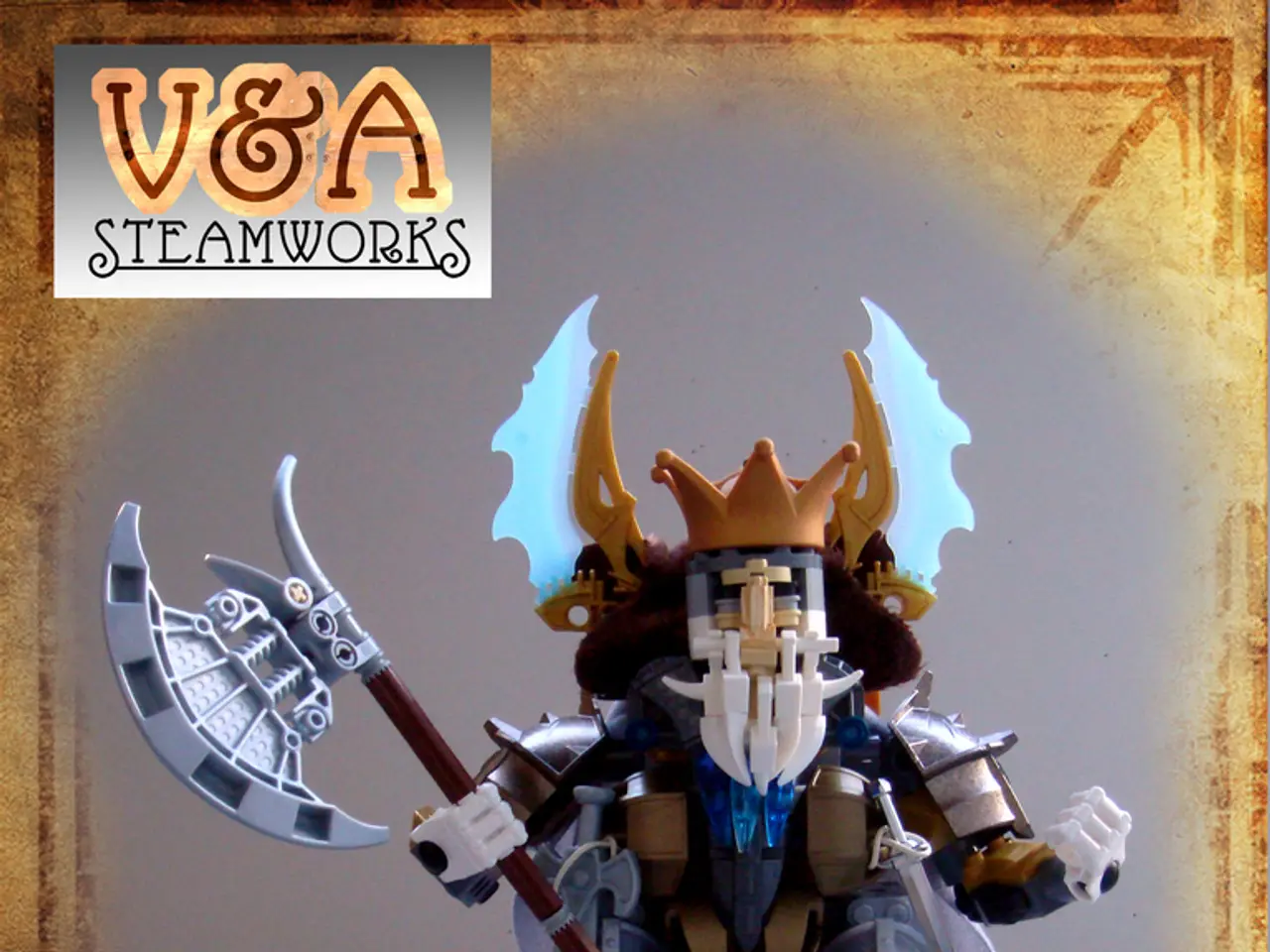The Mythical Scale: Unveiling the Actual Weight of Thor's Hammer, Mjolnir
In the realm of mythology and modern adaptations, Mjolnir stands as a symbol of power, protection, and cosmic order. This legendary hammer, wielded by the God of Thunder, Thor, holds a rich history rooted in Norse mythology and has evolved into a contemporary icon embodying themes of worthiness, heroism, and personal growth.
In Norse mythology, Mjolnir represented strength, protection, fertility, order, and cosmic balance. It was more than just a weapon; it was a powerful ritual tool that sanctified events from birth to burial, embodying a divine force that maintained social and cosmic order by countering chaos and evil. Mjolnir was a talisman for protection in battle, a symbol of purification and fertility in ceremonies, and a consecrating instrument for homes and funerals.
In modern adaptations, especially in the Marvel Cinematic Universe (MCU), Mjolnir is portrayed as a symbol of worthiness, heroism, and valor. It retains its mythic qualities such as returning to its wielder and imbuing them with power, but its symbolism is extended to include themes of personal growth, responsibility, and nobility. The hammer chooses who is worthy to wield it, making it a narrative tool for character development and moral strength.
| Aspect | Norse Mythology | Modern Adaptations (MCU) | |------------------------|-----------------------------------------------|---------------------------------------------| | Core Symbolism | Strength, protection, fertility, order, cosmic balance | Worthiness, heroism, personal growth, valor | | Powers | Returns on demand, controls thunder/lightning, amplifies strength, unbreakable | Same mythic powers plus enhanced storytelling on worthiness and responsibility | | Use in Rituals | Used in protective amulets, weddings, funerals, sanctifications | Primarily a heroic weapon and symbol of power in stories | | Social Role | Talisman for Vikings; symbol of protection and social continuity | Mythic artifact that can grant power and identity to chosen bearers | | Relation to Life Cycle | Symbolizes creation, fertility, cyclical renewal | Emphasizes heroism and moral journey |
The enchantment on Mjolnir acts as a conduit and amplifier for Odin's magic, allowing for the illusion of immense weight and the ability to transfer cosmic forces. In the Marvel Comics, Mjolnir's weight has been explicitly stated as 42.3 pounds (19.2 kilograms). However, in the MCU, the weight of Mjolnir is not explicitly mentioned, with the focus on the worthiness enchantment and the visual spectacle of Thor wielding the hammer with immense power.
Thor requires special iron gloves, Járngreipr, to grip Mjolnir properly. Mjolnir's weight, in this context, can be interpreted as the concept of worthiness, emphasizing character, integrity, and selflessness. Mjolnir is a symbol of Thor's position as a god and a protector, embodying tradition and authority.
Mjolnir was forged by the dwarven brothers Brokkr and Eitri (also known as Sindri). The Uru metal, a fictional metal imbued with unique properties, was used in its construction, allowing for the enchantment to function effectively. Loki, the trickster god, attempted to sabotage Brokkr and Eitri's work, but the hammer was still crafted.
Throughout Marvel Comics history, several characters have proven worthy of wielding Mjolnir, including Captain America, Beta Ray Bill, Vision, and Jane Foster. Vision, an android, has famously lifted Mjolnir, suggesting that biological composition isn't a strict requirement for worthiness.
In conclusion, Mjolnir symbolizes a divine instrument of protection, strength, and cosmic order in Norse tradition and has evolved into a modern icon of worthiness and heroism connecting ancient beliefs with contemporary values. Its weight, while not explicitly stated in the MCU, can be seen as a representation of worthiness, emphasizing character, integrity, and selflessness. Mjolnir represents the immense responsibility Thor carries to safeguard the realms from threats, making it more than just a weapon, but a symbol of heroism and moral strength.
In Norse mythology, Mjolnir was not only a symbol of strength and protection but also a powerful ritual tool, embodying themes of fertility, order, and social continuity. In pop-culture, particularly in the Marvel Cinematic Universe (MCU), Mjolnir is portrayed as a symbol of pop-culture themes such as personal growth, responsibility, and nobility. It represents a connection between ancient beliefs and contemporary values.




